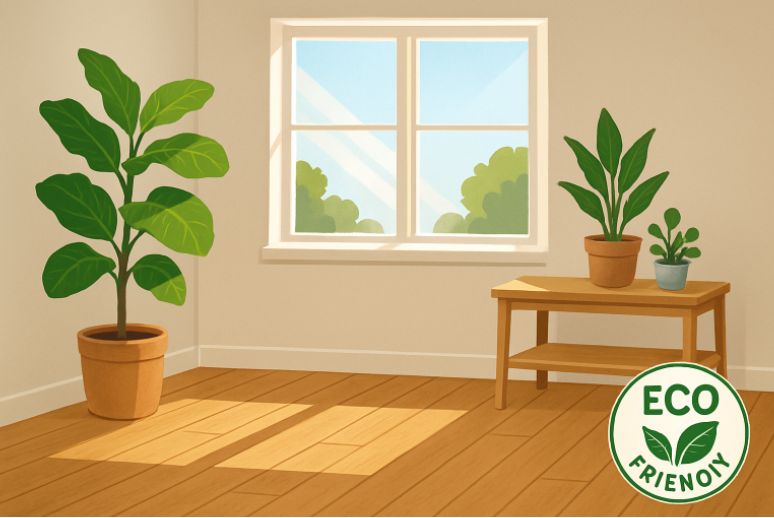Environmental responsibility is increasingly taking center stage in home design, and flooring is no exception. Today, an increasing number of homeowners are seeking out options that combine the timeless elegance of hardwood flooring with respect for the planet. Sustainable hardwood flooring options not only bring natural beauty into your home, but they do so without compromising on environmental ethics. Whether you’re updating your style or revitalizing old surfaces with Hardwood Floor Refinishing, selecting eco-friendly flooring solutions is a practical step toward a greener future. Key considerations for sustainable hardwood floors include the renewability of resources, the ecological impact of sourcing, and ensuring a healthy indoor environment. Fortunately, advances in technology and forestry practices now offer a variety of beautiful, sustainable flooring options for the modern home. Certified woods, rapidly renewable resources, reclaimed materials, and new finishing technologies all provide practical ways to enjoy hardwood while staying true to eco-conscious principles.
The surge in green building and renovation has led to a boom in options for eco-conscious flooring. Sustainable hardwood floors not only reflect a commitment to the planet but also offer exceptional durability and unique character for every home. As you consider your flooring options, it’s essential to understand the environmental benefits and practical advantages each solution provides.
This commitment to sustainability isn’t just about new installations. Renovating and maintaining existing floors in an eco-friendly way can make a substantial impact on your home’s carbon footprint, ensuring longevity and style with minimal environmental cost.
Reclaimed Wood: A Second Life for Hardwood
One of the most sustainable flooring choices is reclaimed wood, which gives new life to lumber salvaged from old buildings, warehouses, and barns. Rather than allowing these materials to end up in landfills, reclaimed wood is meticulously restored for use in modern applications. Each plank carries unique marks from its past, including original saw marks, nail holes, and beautifully weathered textures, delivering both character and historical significance that cannot be reproduced with new lumber. Choosing reclaimed wood reduces demand for freshly harvested timber and minimizes waste, while supporting the preservation of old-growth forests. This eco-friendly approach has gained popularity among homeowners seeking both rustic charm and environmental stewardship.
Rapidly Renewable Materials: Bamboo and Cork
Bamboo and cork stand out as two of the fastest-growing and most renewable alternatives available. Bamboo is technically a grass and can mature enough for harvest in three to five years, as opposed to the decades needed for hardwood trees. Strong, resilient, and available in a variety of finishes, high-quality bamboo rivals traditional hardwoods in terms of longevity. Cork, derived from the bark of cork oak trees, is harvested without harming the tree, allowing it to regenerate naturally. It’s naturally soft underfoot, provides excellent thermal and sound insulation, and is hypoallergenic, making it ideal for households seeking comfort and sustainability. Both bamboo and cork minimize pressure on forest ecosystems and are often certified for sustainable harvest, further ensuring their environmental responsibility.
Certifications: Ensuring Responsible Sourcing
Look for hardwood flooring that carries certification from reputable organizations, such as the Forest Stewardship Council (FSC) and the Sustainable Forestry Initiative (SFI). These designations confirm that the wood was harvested and processed in accordance with strict environmental and ethical guidelines, including forest regeneration, wildlife protection, and adherence to fair labor practices. Certified products contribute to the regeneration of forests and promote global efforts to maintain biodiversity. More information about the importance of forest certifications and sustainable sourcing is available from National Geographic, which offers profound insights into forestry protection and supply chains.
Low-VOC Finishes: Healthier Indoor Environments
Traditional stains, varnishes, and sealers used in hardwood flooring can contain high levels of volatile organic compounds (VOCs), which are released into indoor air. Over time, VOCs can contribute to respiratory problems and poor indoor air quality. In response, manufacturers now offer low-VOC and zero-VOC finishes that protect both your family’s health and the environment. Low-VOC finishes offer durable, long-lasting protection while imparting a beautiful sheen to floors, allowing you to enjoy the benefits of hardwood flooring without compromising indoor air quality. They are readily available in a variety of finishes, making it easy to find products that meet both your style and sustainability standards.
Engineered Hardwood: Efficient Use of Resources
Engineered hardwood flooring offers a sustainable alternative to solid hardwood by maximizing resource efficiency. Each plank consists of a thin veneer of real hardwood bonded over a high-quality plywood base, often constructed from fast-growing, sustainable woods. This design enables a higher yield from each harvested tree and makes high-end wood species more widely available without depleting natural reserves. Additionally, engineered hardwoods can often be installed in places where traditional solid hardwood would not be recommended, such as over concrete or in basements, further increasing their versatility and lifespan.
Domestic Hardwoods: Supporting Local Ecosystems
Opting for domestically-sourced hardwoods like oak, walnut, hickory, maple, and Douglas fir provides more than just a beautiful, long-lasting flooring surface. Choosing local materials reduces carbon emissions associated with transportation and supports regional economies and forestry initiatives. Domestic hardwoods are harvested from well-managed North American forests, often certified for sustainability, and are renowned for their strength and warmth. By favoring local species, homeowners can help maintain native ecosystems, protect wildlife habitats, and strengthen the market for sustainable forestry practices.
Circular Economy: Reclaimed and Upcycled Flooring
Today’s sustainability movement embraces the principles of a circular economy, in which materials are reused and upcycled to eliminate waste. Flooring made from reclaimed or upcycled wood draws on this concept, giving wood from dismantled structures a new, stylish purpose while conserving resources and energy. These floors not only offer a dramatic design statement but also celebrate historical authenticity and craftsmanship. This approach extends the ordinary lifespan of valuable materials and reduces the environmental demand for continuous resource extraction, offering an aesthetic that is as green as it is unique.
Conclusion
Sustainable hardwood flooring choices empower homeowners to combine design goals with environmental stewardship. From reclaimed wood to rapidly renewable materials, from certified products to innovative low-VOC finishes and domestic hardwoods, today’s options are broader and more accessible than ever. Thoughtfully selected and carefully maintained, these flooring solutions provide both beauty and peace of mind, ensuring your flooring investments support both your values and the future of the planet.







